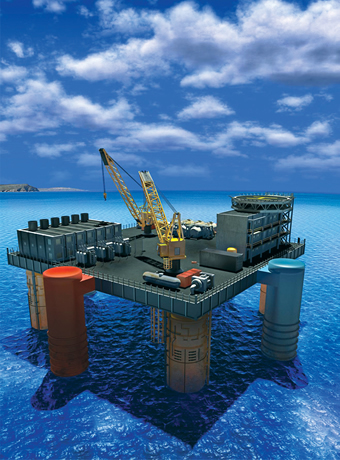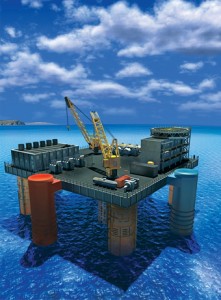
Lockheed Martin Announces Plans to Build Ocean Thermal Pilot Plant

rendering of OTEC system. Source: Oak Ridge National Lab
While discussion of clean energy often revolves around wind, solar, and geothermal, harnessing energy from the oceans often gets overlooked. Even among ocean energy technologies, most companies and analysts focus on offshore wind, or to a lesser extent, wave and tidal power.
However, Lockheed Martin recently made headlines with its interest in ocean thermal energy conversion (OTEC), a little known energy technology even though its concept has been around since the 19th century. On April 16, Lockheed Martin announced its partnership with Reignwood Group to develop a 10-megawatt OTEC pilot power plant off the coast of southern China. The pilot plant would provide 100% of the power to a resort to be constructed by Reignwood Group, located on Hainan island. Secretary of State John Kerry was on hand at the signing ceremony in China.
Ocean thermal uses the natural difference in temperatures from warm surface water and cooler deeper water. The temperature difference can be used to drive a “steam” cycle, which subsequently spins a turbine much like a typical power plant.
The great advantage of OTEC, once it can be scaled up, is that an OTEC power plant can provide 24/7 baseload power, unlike other renewable energy technologies. The difficulty lies in developing materials that can withstand corrosion in the deep sea, but Lockheed Martin believes its extensive experience in developing advanced materials in its other industry work (aerospace, defense), give it a head start over other companies.
It makes particular sense for island nations or coastal areas that are dependent on expensive fossil fuel resources for power. Lockheed Martin has stated that its pilot plant in China will be a “stepping stone” to a bigger 100-megawatt plant. Stay tuned.
Check out this promotional video from Lockheed Martin on OTEC, which describes how it works:






[…] Lockheed Martin Announces Plans to Build Ocean Thermal Pilot Plant […]